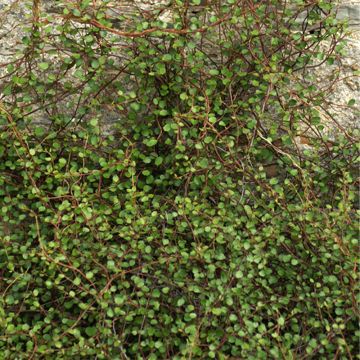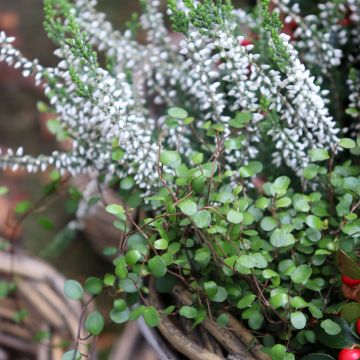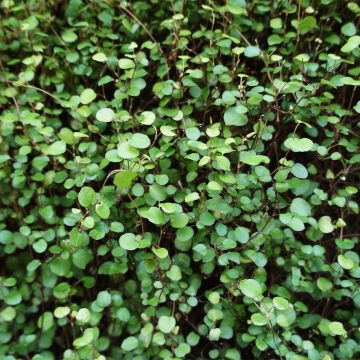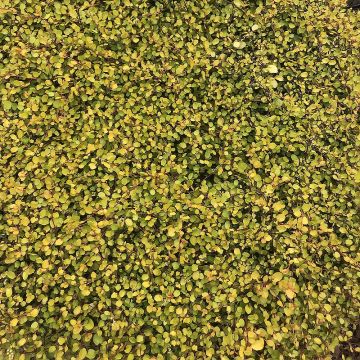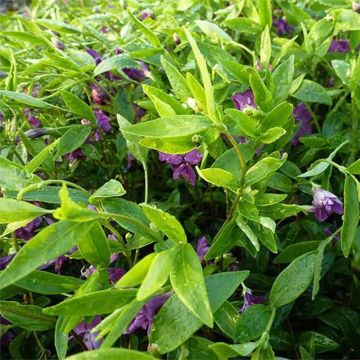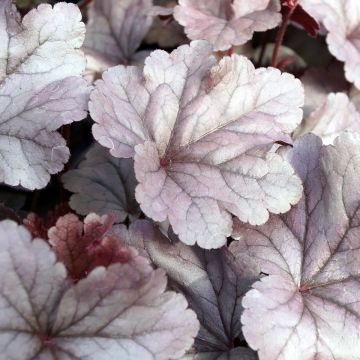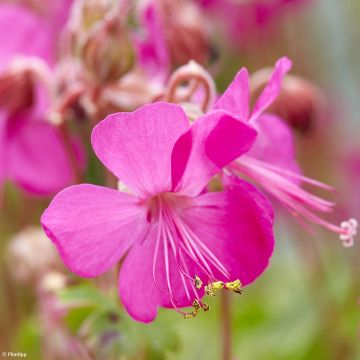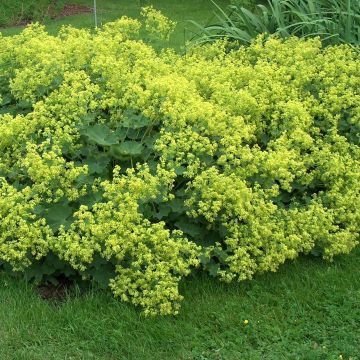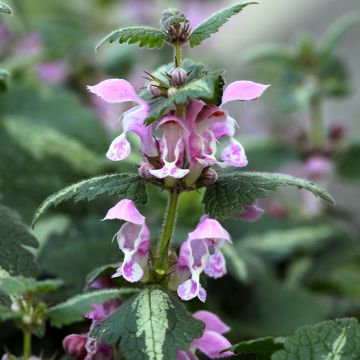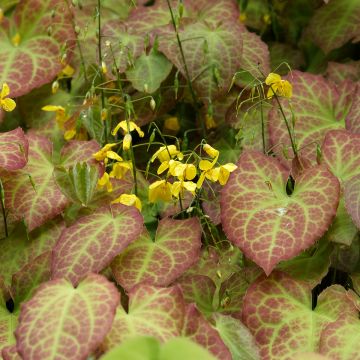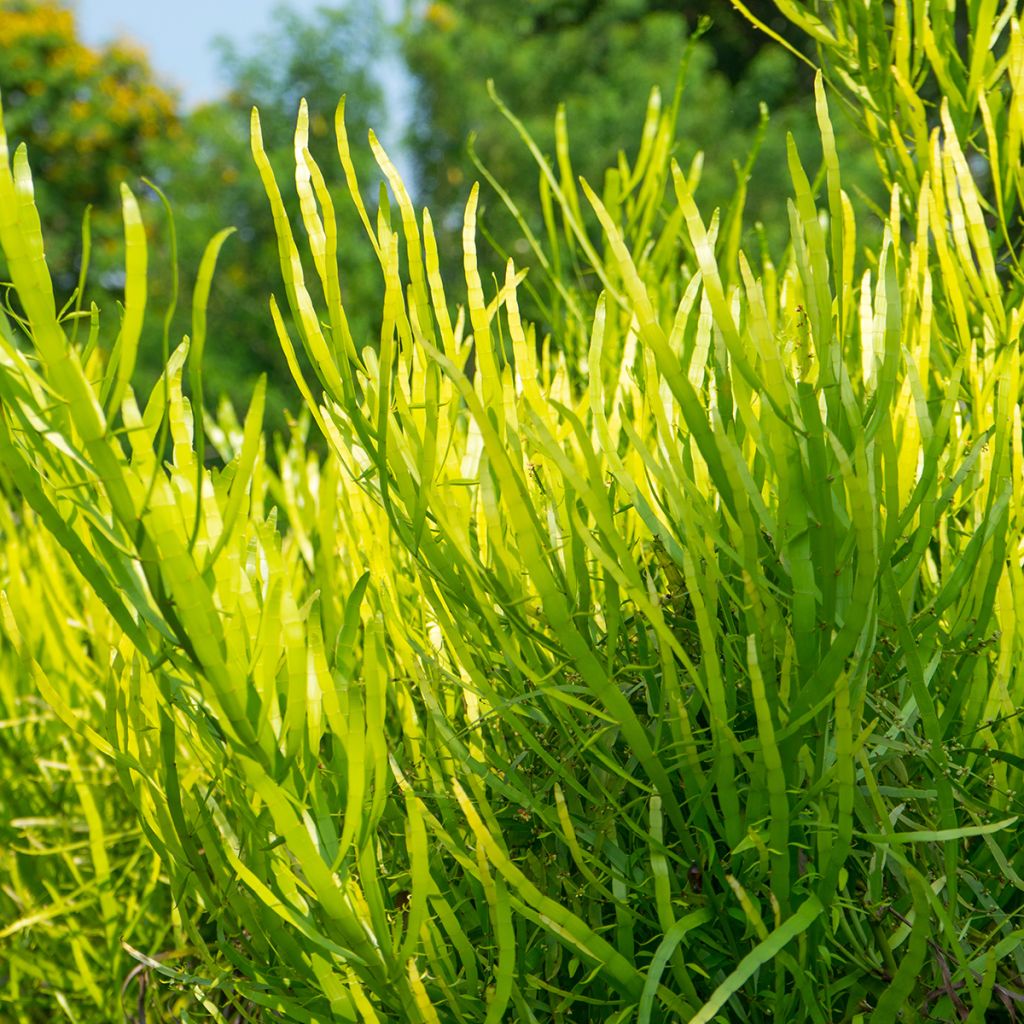

Muehlenbeckia platyclada
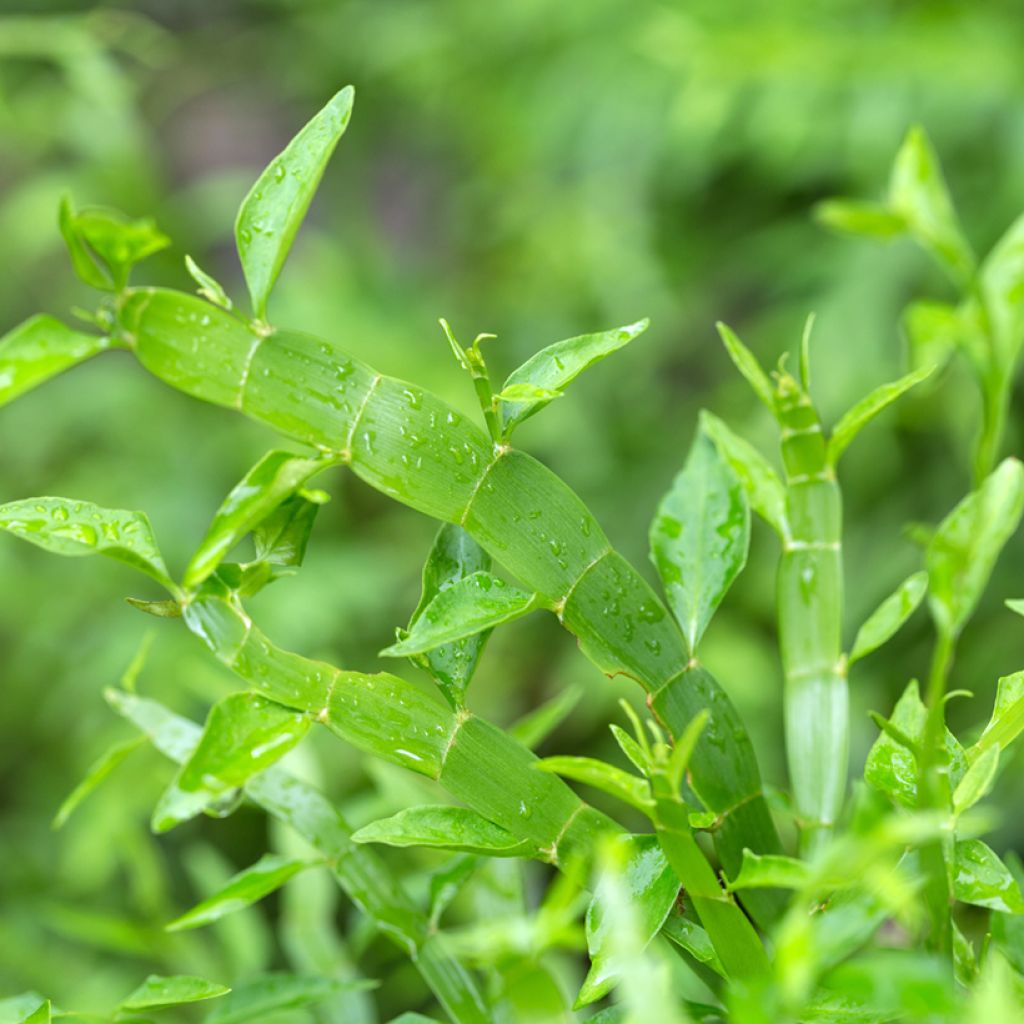

Muehlenbeckia platyclada
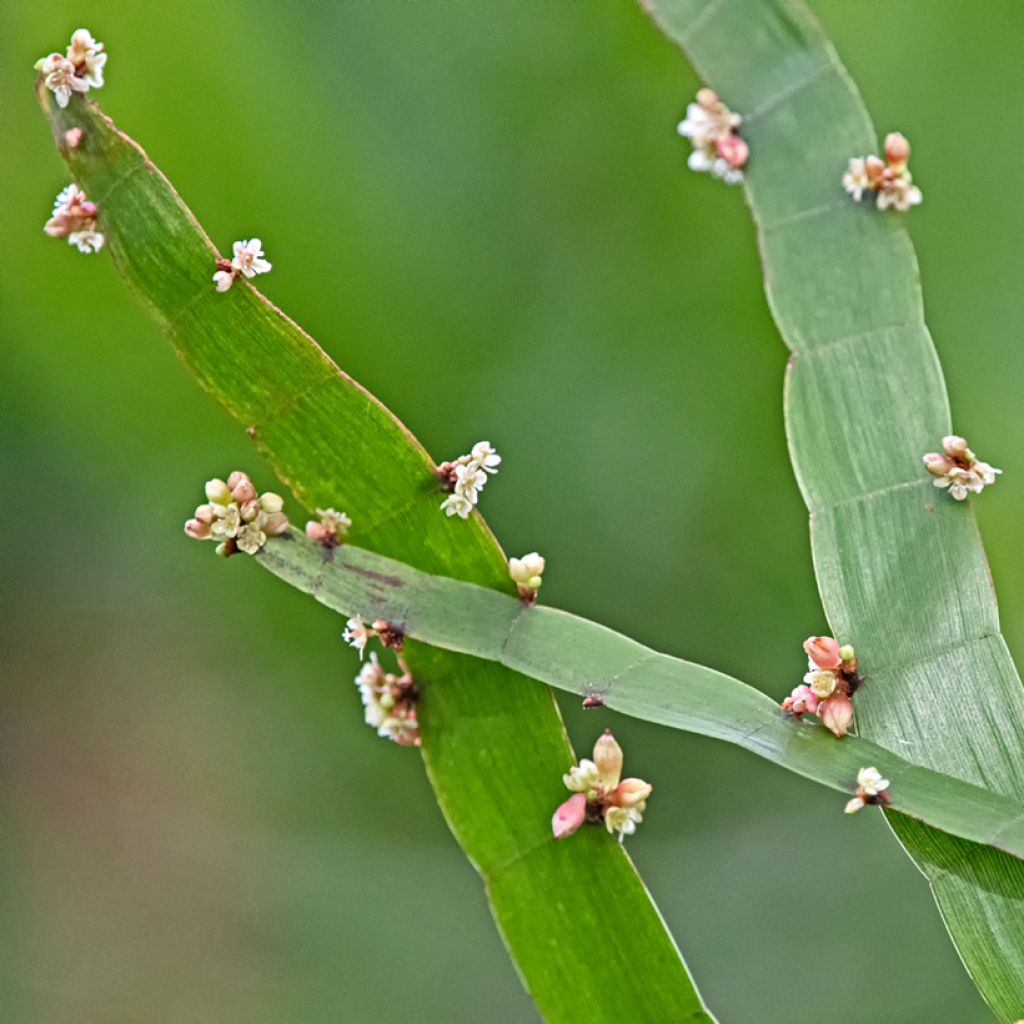

Muehlenbeckia platyclada
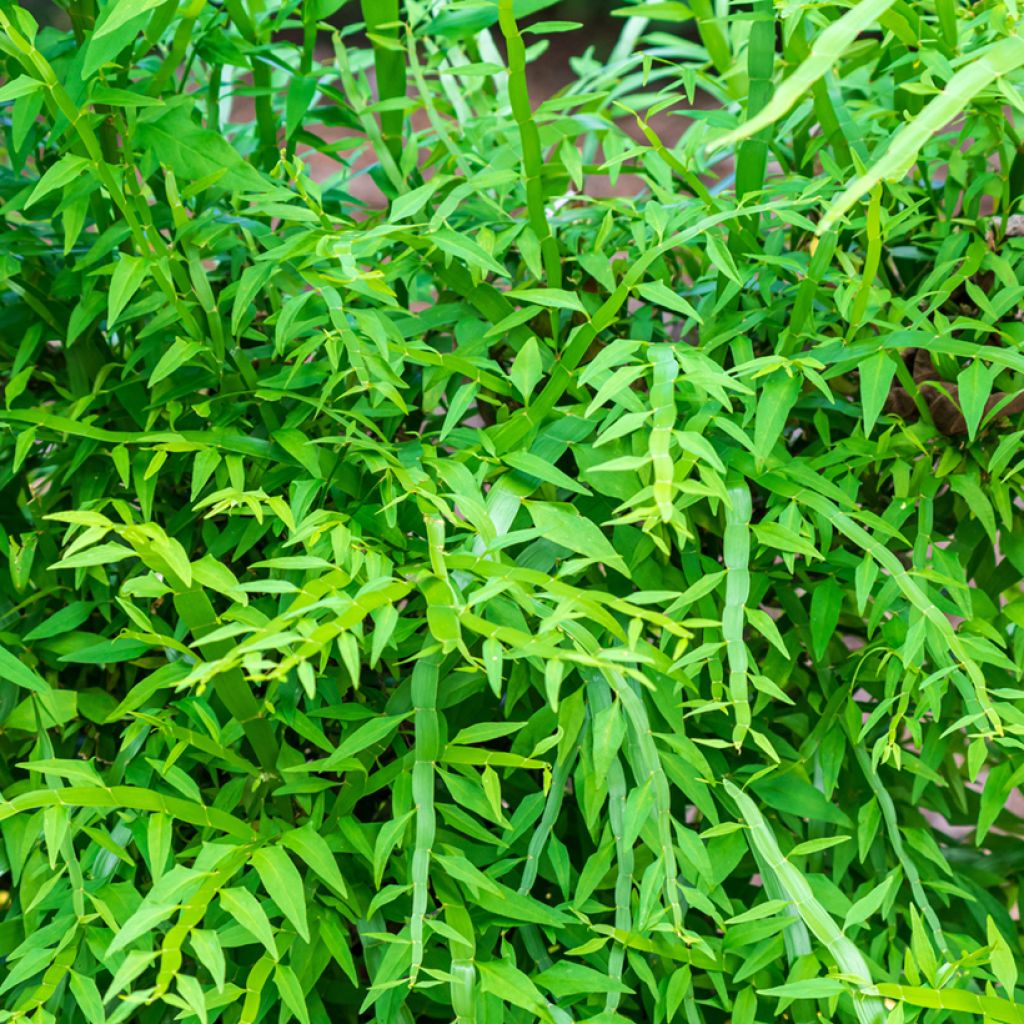

Muehlenbeckia platyclada
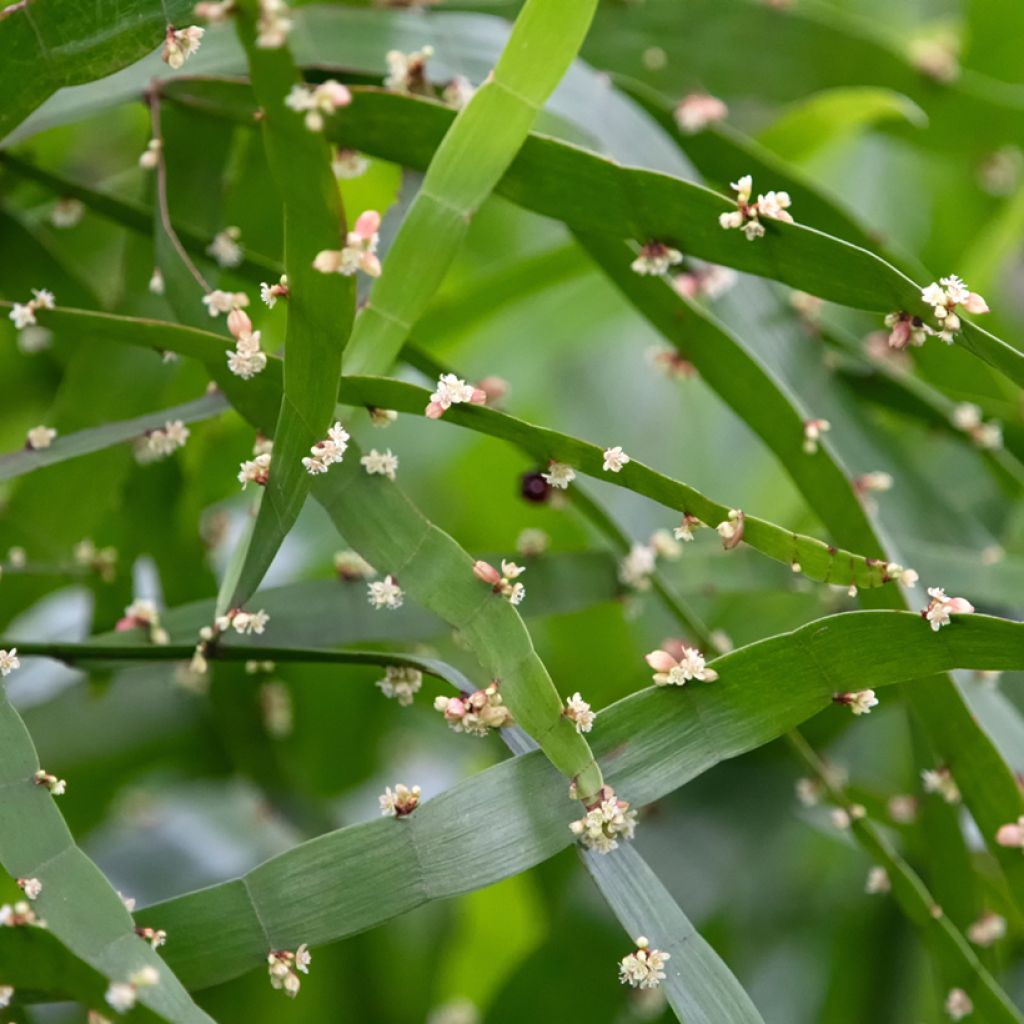

Muehlenbeckia platyclada
Muehlenbeckia platyclada
Muehlenbeckia platyclada
Ribbon Bush, Centipede Plant, Tapeworm Plant, Zig-Zag Bush
Why not try an alternative variety in stock?
View all →This plant carries a 24 months recovery warranty
More information
We guarantee the quality of our plants for a full growing cycle, and will replace at our expense any plant that fails to recover under normal climatic and planting conditions.
From €5.90 for pickup delivery and €6.90 for home delivery
Express home delivery from €8.90.
Does this plant fit my garden?
Set up your Plantfit profile →
Description
Muehlenbeckia platyclada, formerly known as Homalocladium platycladum, is nicknamed the ribbon bush due to its flat, thin, and undulating branches of a lovely spring green. It must be admitted that this curious undershrub, which resembles seaweed, is quite distinctive. It is an exotic and frost-sensitive plant native to New Guinea, the Solomon Islands, and other Pacific islands. Cultivable in open ground in frost-free coastal gardens, it is as decorative and original as an indoor or conservatory plant. It can spend the summer on a patio or balcony. It can also be used as an annual, as its growth is vigorous and rapid.
Muehlenbeckia platyclada is commonly called the flat-stemmed Muehlenbeckia, centipede plant, tapeworm plant, or ribbon bush. It belongs to the Polygonaceae family, a cousin of sorrel and knotweed. This botanical species is native to Oceania but naturalised in other tropical regions of the world where it is sometimes considered invasive. It is a frost-sensitive plant, with the stump able to withstand brief frosts of -4°C (24.8°F). In our climates, it is generally grown in pots to be protected from the cold during winter. The ideal minimum temperature in winter should be between 10 and 15°C (50 and 59°F).
Muehlenbeckia platyclada is an undershrub with an initially erect and then spreading habit, which quickly reaches about 1m (3ft) in all directions. Its vigour is such that it can reach 2m (7ft) in open ground if not pruned. It is advisable to regularly prune the ribbon bush from a young age, which allows it to have a nice shape and limit its growth. It develops flat and jointed stems composed of bright green, glossy segments. Its tiny leaves, which appear at the joints, are reduced to scales and have a short lifespan. The flat, thin, undulating branches resemble ribbons. False leaves, called cladodes, form on these branches, measuring 1.5 to 6.5cm (1 to 3in) long. This vegetation persists in winter if there is no frost, and it performs the chlorophyll function in place of leaves. Flowering usually occurs in late spring in our climates. It consists of small whitish-green clusters, sometimes pinkish, that appear on the flattened stems at the segment level. After pollination, small edible berries form, transitioning from bright red to dark purple.
In open ground, in favourable climates, this ribbon bush adapts well to full sun as well as fairly dense shade; it can even withstand moderate drought thanks to its well-developed root system. It will bring a truly exotic touch to a flower or shrub bed, along with Restios and ferns, for example. In pots, it should not lack water. Indoors, place it near a window where it will receive a few hours of sunlight. It does not appreciate dry atmospheres too much; its foliage is quite susceptible to powdery mildew and attacks from scale insects. The temperatures of our interiors suit it, and it can withstand heatwaves. However, this Muehlenbeckia does not tolerate temperatures below 10°C (50°F) during its growth period. In a conservatory, it will perfectly complement indoor palms and banana plants.
Report an error about the product description
Muehlenbeckia platyclada in pictures
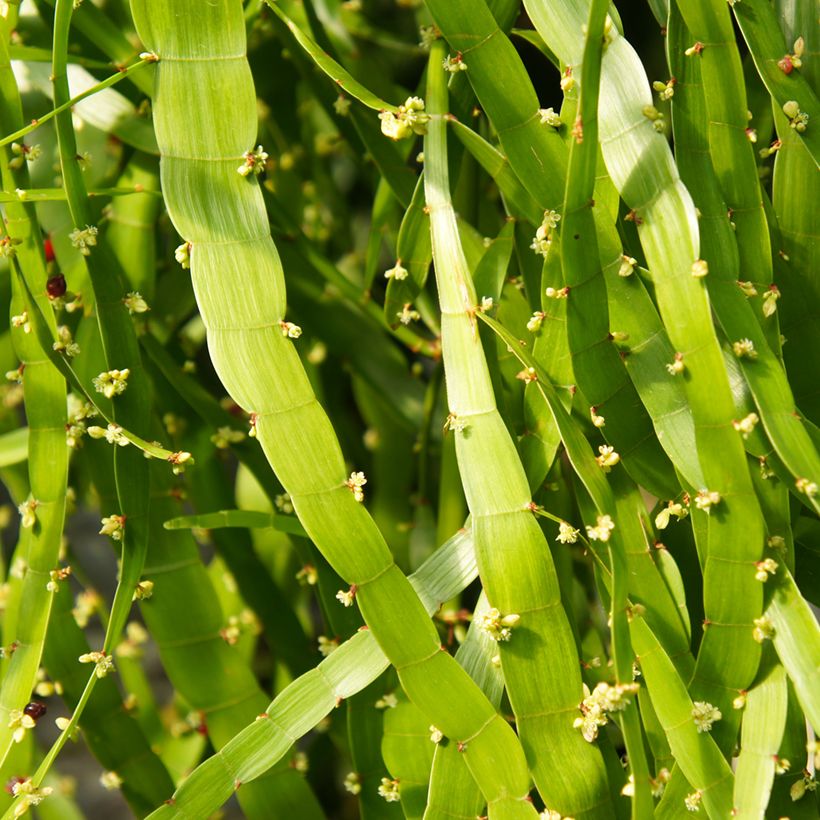



Plant habit
Flowering
Foliage
Botanical data
Muehlenbeckia
platyclada
Polygonaceae
Ribbon Bush, Centipede Plant, Tapeworm Plant, Zig-Zag Bush
Oceania
Other Muehlenbeckia
Planting and care
Muehlenbeckia platyclada is often sold as an indoor plant, as it is a frost-sensitive species whose stump perishes below -4 °C (24.8°F). It can be grown in the ground, in soil with a sandy and humus-rich tendency, on coastlines spared by frost. Alternatively, it can be used as an annual in flower beds and left to freeze in winter. In the ground, in favourable climates, this ribbon bush adapts well to full sun as well as fairly dense shade, and it can even withstand moderate drought thanks to its well-developed root system. However, this Muehlenbeckia does not tolerate temperatures below 10 °C (50°F) during its growth period.
Pot cultivation poses no particular difficulty: compose a mixture of potting soil, coarse sand, and garden soil. Indoors, place this plant near a window so that it receives a few hours of sunlight per day. Water regularly, as it should not lack water, and provide some fertiliser every 15 days during the growing season, from March to August. You can overwinter your potted plants in a very bright room, protected from frost.
Its foliage is quite sensitive to powdery mildew and it can be prone to attacks from scale insects. The temperatures in our homes suit it well and it can withstand heatwaves. However, this Muehlenbeckia does not tolerate the very dry atmosphere of our interiors. A relative humidity of at least 40 to 50% or more is recommended. Depending on the case, it may be advisable to place it in a bathroom or laundry room. Or even use a humidifier during winter to maintain the necessary humidity.
Prune regularly, as needed. Pruning young plants allows them to become denser from the start. Shorten the stems to 60 to 70cm (24 to 28in) as soon as they reach 90cm (35in) to 1.2m (4ft).
Fast-growing, the ribbon bush requires annual repotting (preferably in spring or summer) in a larger pot during the first years of cultivation.
Easy propagation by stem cuttings, 10 to 15cm (4 to 6in) long, in moist potting soil, in a covered environment (under plastic or in a mini-greenhouse), at a warm temperature (between 20 and 25°C (68 and 77°F)).
Planting period
Intended location
Care
This item has not been reviewed yet - be the first to leave a review about it.
Ground cover perennials
Haven't found what you were looking for?
Hardiness is the lowest winter temperature a plant can endure without suffering serious damage or even dying. However, hardiness is affected by location (a sheltered area, such as a patio), protection (winter cover) and soil type (hardiness is improved by well-drained soil).

Photo Sharing Terms & Conditions
In order to encourage gardeners to interact and share their experiences, Promesse de fleurs offers various media enabling content to be uploaded onto its Site - in particular via the ‘Photo sharing’ module.
The User agrees to refrain from:
- Posting any content that is illegal, prejudicial, insulting, racist, inciteful to hatred, revisionist, contrary to public decency, that infringes on privacy or on the privacy rights of third parties, in particular the publicity rights of persons and goods, intellectual property rights, or the right to privacy.
- Submitting content on behalf of a third party;
- Impersonate the identity of a third party and/or publish any personal information about a third party;
In general, the User undertakes to refrain from any unethical behaviour.
All Content (in particular text, comments, files, images, photos, videos, creative works, etc.), which may be subject to property or intellectual property rights, image or other private rights, shall remain the property of the User, subject to the limited rights granted by the terms of the licence granted by Promesse de fleurs as stated below. Users are at liberty to publish or not to publish such Content on the Site, notably via the ‘Photo Sharing’ facility, and accept that this Content shall be made public and freely accessible, notably on the Internet.
Users further acknowledge, undertake to have ,and guarantee that they hold all necessary rights and permissions to publish such material on the Site, in particular with regard to the legislation in force pertaining to any privacy, property, intellectual property, image, or contractual rights, or rights of any other nature. By publishing such Content on the Site, Users acknowledge accepting full liability as publishers of the Content within the meaning of the law, and grant Promesse de fleurs, free of charge, an inclusive, worldwide licence for the said Content for the entire duration of its publication, including all reproduction, representation, up/downloading, displaying, performing, transmission, and storage rights.
Users also grant permission for their name to be linked to the Content and accept that this link may not always be made available.
By engaging in posting material, Users consent to their Content becoming automatically accessible on the Internet, in particular on other sites and/or blogs and/or web pages of the Promesse de fleurs site, including in particular social pages and the Promesse de fleurs catalogue.
Users may secure the removal of entrusted content free of charge by issuing a simple request via our contact form.
The flowering period indicated on our website applies to countries and regions located in USDA zone 8 (France, the United Kingdom, Ireland, the Netherlands, etc.)
It will vary according to where you live:
- In zones 9 to 10 (Italy, Spain, Greece, etc.), flowering will occur about 2 to 4 weeks earlier.
- In zones 6 to 7 (Germany, Poland, Slovenia, and lower mountainous regions), flowering will be delayed by 2 to 3 weeks.
- In zone 5 (Central Europe, Scandinavia), blooming will be delayed by 3 to 5 weeks.
In temperate climates, pruning of spring-flowering shrubs (forsythia, spireas, etc.) should be done just after flowering.
Pruning of summer-flowering shrubs (Indian Lilac, Perovskia, etc.) can be done in winter or spring.
In cold regions as well as with frost-sensitive plants, avoid pruning too early when severe frosts may still occur.
The planting period indicated on our website applies to countries and regions located in USDA zone 8 (France, United Kingdom, Ireland, Netherlands).
It will vary according to where you live:
- In Mediterranean zones (Marseille, Madrid, Milan, etc.), autumn and winter are the best planting periods.
- In continental zones (Strasbourg, Munich, Vienna, etc.), delay planting by 2 to 3 weeks in spring and bring it forward by 2 to 4 weeks in autumn.
- In mountainous regions (the Alps, Pyrenees, Carpathians, etc.), it is best to plant in late spring (May-June) or late summer (August-September).
The harvesting period indicated on our website applies to countries and regions in USDA zone 8 (France, England, Ireland, the Netherlands).
In colder areas (Scandinavia, Poland, Austria...) fruit and vegetable harvests are likely to be delayed by 3-4 weeks.
In warmer areas (Italy, Spain, Greece, etc.), harvesting will probably take place earlier, depending on weather conditions.
The sowing periods indicated on our website apply to countries and regions within USDA Zone 8 (France, UK, Ireland, Netherlands).
In colder areas (Scandinavia, Poland, Austria...), delay any outdoor sowing by 3-4 weeks, or sow under glass.
In warmer climes (Italy, Spain, Greece, etc.), bring outdoor sowing forward by a few weeks.

































